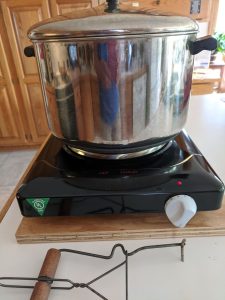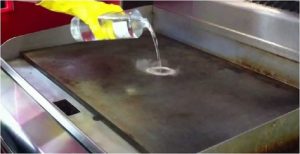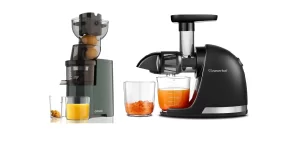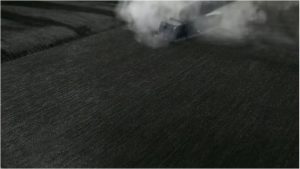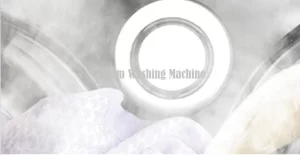Using Saran Wrap In The Microwave! Is It Safe?
Saran wrap, also known as cling wrap or plastic wrap, is a commonly used kitchen item for food storage and preservation. Many people wonder whether it is safe to use Saran wrap in the microwave. The answer is yes, Saran wrap is generally considered microwave-safe.
When using Saran wrap in the microwave, you should follow some guidelines to ensure safety.
To microwave potatoes with Saran wrap, it is recommended to pierce the potatoes with a fork to allow steam to escape. Then, wrap the potatoes loosely with the Saran wrap, leaving a small vent for steam to release. This helps prevent the build-up of pressure and avoids the risk of the wrap bursting.
While Saran wrap is generally safe for microwave use, exercise caution. Avoid using it in direct contact with hot foods or in the oven, as it can melt or release harmful chemicals.
Can You Microwave Saran Wrap?
Microwaving Saran Wrap is a common practice in many households, but is it safe? The answer depends on a few factors. Saran Wrap is a type of plastic wrap that is commonly used for food storage and preservation. When exposed to high temperatures, such as those in a microwave, plastic wraps can potentially release harmful chemicals into the food.
While Saran Wrap is generally considered microwave-safe, it is important to follow certain guidelines to ensure safety. First, make sure the Saran Wrap is labeled as microwave-safe. Look for labels or symbols indicating that the wrap is specifically designed for microwave use. This ensures that the wrap can withstand the heat without melting or releasing harmful substances.
Another consideration is the type of food being microwaved. Foods with high-fat content, such as cheese or fatty meats, can generate more heat during microwaving. This increased heat can cause the plastic wrap to melt or release chemicals. It is advisable to use microwave-safe containers or covers specifically designed for high-heat foods to avoid any potential risks.
It is crucial to avoid direct contact between the plastic wrap and the food. Leave a small vent or opening to allow steam to escape during microwaving. This prevents the build-up of pressure and reduces the chances of the plastic wrap melting or deforming.
How Do You Know If Saran Wrap Is Microwave Safe Or Not?
Determining whether Saran Wrap is microwave-safe or not can be a crucial step in ensuring the safety of your food. Here are a few ways to determine if Saran Wrap is suitable for use in the microwave.
Check the packaging
Look for labels or symbols on the packaging that indicates whether the Saran Wrap is microwave-safe. Manufacturers often provide clear instructions regarding the safe use of their products in the microwave.
Look for temperature resistance
Microwave-safe plastic wraps are designed to withstand high temperatures without melting or releasing harmful chemicals. Check the packaging or product information for details on the temperature resistance of the Saran Wrap. It should specify the maximum temperature it can handle.
Conduct a heat test
If the packaging does not provide clear information, you can perform a simple heat test. Cut a small piece of Saran Wrap and place it in the microwave alongside a microwave-safe glass of water. Heat the water for 30 seconds on high power. If the Saran Wrap remains intact and does not melt or deform, it is likely microwave-safe.
Research the brand
If you are unsure about the microwave safety of a particular brand of Saran Wrap, do some research. Check the manufacturer’s website or contact customer support for information on the product’s microwave suitability.
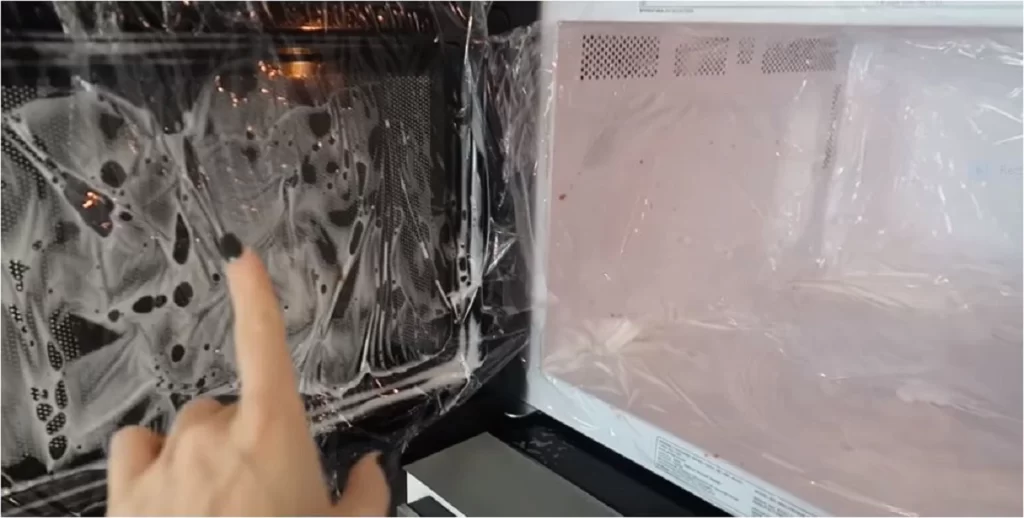
Health Risks Associated with Microwaving Saran Wrap
Microwaving Saran Wrap can potentially pose health risks due to the release of harmful chemicals. When exposed to high temperatures, plastic wraps like Saran Wrap can release substances such as phthalates and dioxins, which are known to have adverse health effects.
Phthalates are chemicals commonly used in the production of plastics, including Saran Wrap. These chemicals can leach into food when heated, especially fatty foods. Studies have linked phthalate exposure to various health issues, including hormonal disruptions, reproductive problems, and developmental disorders.
Dioxins are highly toxic compounds that can be released when plastic wraps are heated. Prolonged exposure to dioxins has been associated with an increased risk of cancer, immune system disorders, and reproductive problems.
To minimize the health risks associated with microwaving Saran Wrap, it is important to follow safety guidelines. Use microwave-safe plastic wraps specifically designed for high-heat applications. Look for labels or symbols indicating that the wrap is safe for microwave use.
Also, avoid direct contact between the plastic wrap and the food. Leave a small vent or opening to allow steam to escape during microwaving. This reduces the chances of the plastic wrap melting or releasing harmful substances.
If you are concerned about the potential health risks of microwaving Saran Wrap, consider using alternative microwave-safe covers or containers. Glass or ceramic containers with microwave-safe lids are excellent alternatives that do not pose the same risks as plastic wraps.
Read More: 5 Best Containers to Freeze Fresh Juice in 2023
Safer Options for Microwaving Food: Beyond Plastic Wrap
1. Microwave-safe glass containers: Glass containers are an excellent choice for microwaving food. They are heat-resistant and do not release harmful chemicals into the food. Look for containers labeled as microwave-safe to ensure their suitability for use in the microwave.
2. Microwave-safe silicone lids: Silicone lids are flexible, reusable, and microwave-safe. They create an airtight seal, preventing splatters and retaining moisture during the microwaving process. Silicone lids are a great alternative to plastic wrap as they are free from harmful chemicals and can be easily cleaned.
3. Microwave-safe paper towels: Paper towels can be used to cover food in the microwave, especially for reheating. They help absorb excess moisture and prevent splatters. Ensure that the paper towels are labeled as microwave-safe to avoid any risk of ignition.
4. Microwave-safe ceramic or porcelain plates: Ceramic or porcelain plates can be used to cover food in the microwave. They are safe for use in high temperatures and do not release harmful substances. However, be cautious as these plates can become hot during microwaving, so use oven mitts or a towel to handle them.
Is Costco or Reynolds Plastic Wrap Safe for Microwaving?
Costco and Reynolds are popular brands known for their plastic wrap products. But are they safe for microwaving? Let’s find out:
1. Costco plastic wrap: Costco offers a range of plastic wrap products, and some of them are labeled as microwave-safe. It is important to check the packaging for specific instructions and look for microwave-safe symbols or labels. If the plastic wrap is labeled as microwave-safe, it should be suitable for use in the microwave without any health risks.
2. Reynolds plastic wrap: Reynolds is another well-known brand that produces plastic wrap. Similar to Costco, Reynolds offers microwave-safe plastic wrap options. Look for the microwave-safe label or instructions on the packaging to ensure its suitability for microwaving.
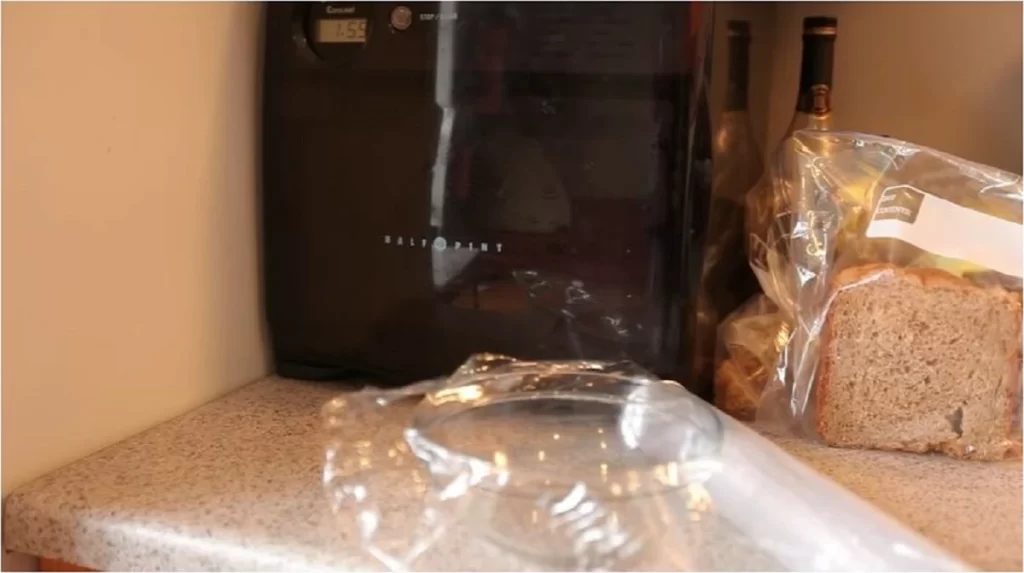
Oven Safety: Can Saran Wrap Handle High Temperatures?
Saran Wrap is a popular plastic wrap used for food storage and preservation, but can it handle high temperatures in the oven? Let’s explore:
Saran Wrap is not designed to withstand high temperatures in the oven. When exposed to heat beyond its recommended usage, Saran Wrap can melt, release harmful chemicals, and potentially cause a fire hazard. It is crucial to follow the manufacturer’s instructions and use oven-safe materials for cooking and baking.
If you need to cover food in the oven, consider using oven-safe lids or covers made of materials such as glass, ceramic, or silicone. These materials can withstand high temperatures without melting or releasing harmful substances.
Not all plastic wraps are created equal. Some plastic wraps are specifically labeled as oven-safe, but Saran Wrap is not one of them. Always check the packaging and look for specific instructions regarding oven use.
By using oven-safe materials and following proper guidelines, you can ensure the safety of your food and avoid any potential risks associated with using Saran Wrap in the oven.
Fact or Fiction: The Truth About Microwaving Cling Wrap
Cling wrap, also known as plastic wrap or food wrap, is a common household item used for food storage and covering dishes. But is it safe to microwave cling wrap? Let’s separate fact from fiction:
Fiction
Cling wrap is microwave-safe by default. While some cling wraps are labeled as microwave-safe, not all brands or types of cling wraps can withstand the high temperatures of the microwave. You should check the packaging or look for specific microwave-safe labels or symbols.
Fact
Microwaving cling wrap can pose health risks. When exposed to high temperatures, cling wrap can melt, releasing harmful chemicals into the food. These chemicals, such as phthalates and dioxins, have been linked to various health issues, including hormonal disruptions and reproductive problems.
To ensure microwave safety, consider using alternative covers or containers specifically designed for microwave use. Microwave-safe glass or ceramic containers with microwave-safe lids are excellent options that do not pose the same risks as cling wrap.
When using cling wrap in the microwave, it is important to follow safety guidelines. Avoid direct contact between the cling wrap and the food, leave a small vent or opening for steam to escape, and use microwave-safe containers or covers for high-heat foods.
Read More:
